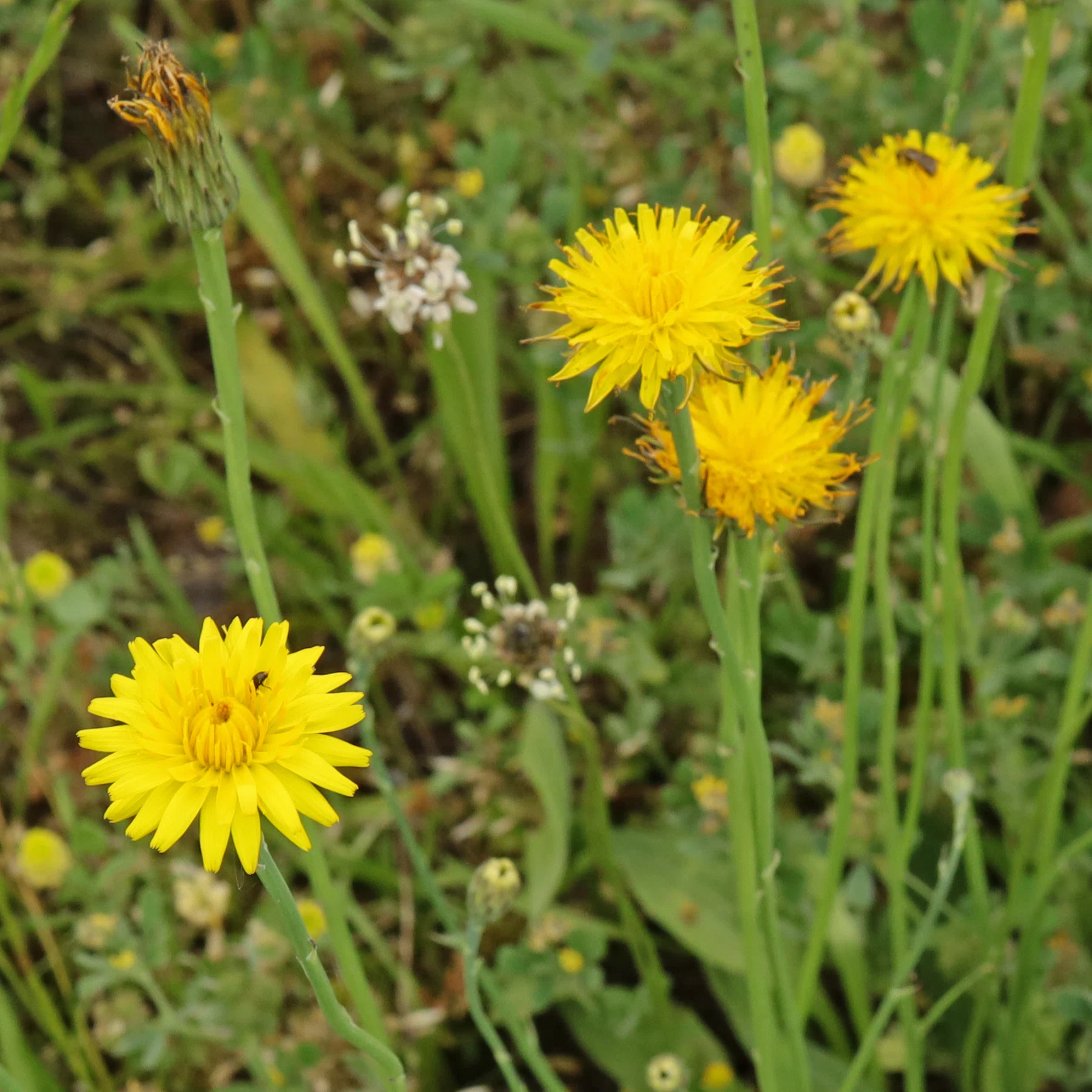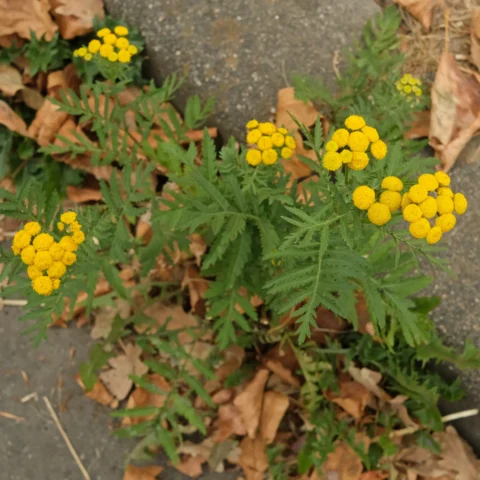Because its leaves lie flat on the ground, Cat’s Ear can survive in regularly mown lawns.
However, they do not lie flat on the ground in all habitats. In meadows where grasses are allowed to grow taller, its leaves can also point upwards.

Botanically, Hypochaeris radicata belongs to the daisy family (Asteraceae), and is closely related to dandelion species, bearing a striking resemblance to them. So maybe that’s why it’s also known as False Dandelion
Hypochaeris radicata is a perennial plant that can produce several flower shoots per season, and blooms from June to October. It can grow up to 70 centimetres in height.
Cat’s Ear can be found growing in a variety of habitats, including lawns, meadows, embankments, banks, and roadsides. It is also able to thrive in less hospitable areas such as gravel paths and pavement gaps.

Cat’s Ear is a plant native to most European countries, with its range extending to North Africa, West Asia, and the Caucasus. Additionally, as an introduced species, it can also be found in other regions (source).
Hypochaeris radicata is known by several common names, including Cat’s Ear, Catsear, Hairy Cat’s Ear, False Dandelion, and Flatweed.
Pollinators
Like many plants in the dandelion family, Cat’s Ear is an important source of food for wild bees. These insects are better adapted to native plants than ornamental perennials. Due to their size and the fact that they often appear solitary, they are not as well-known as honey bees. Nevertheless, they play a crucial role in the ecosystem, as do many other insects.


 Annual Fleabane, Daisy Fleabane
Annual Fleabane, Daisy Fleabane Chicory
Chicory Hairy Galinsoga
Hairy Galinsoga Tansy
Tansy What are Chrysanthemums?
What are Chrysanthemums? Wormwood, Absinthe
Wormwood, Absinthe